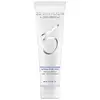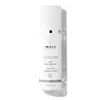What's inside
What's inside
 Key Ingredients
Key Ingredients

 Benefits
Benefits

 Concerns
Concerns

 Ingredients Side-by-side
Ingredients Side-by-side

Water
Skin ConditioningSodium Laureth Sulfate
CleansingAcrylates Copolymer
Jojoba Esters
EmollientGlycerin
HumectantCocamidopropyl Betaine
CleansingMannitol
HumectantCellulose
AbsorbentSpiraea Ulmaria Extract
AstringentDisodium Cocoamphodiacetate
CleansingCocamidopropyl Hydroxysultaine
CleansingTocopheryl Acetate
AntioxidantNiacin
SmoothingNiacinamide
SmoothingCaprylyl Glycol
EmollientLaureth-2
CleansingHexylene Glycol
EmulsifyingSodium Sulfate
Disodium EDTA
Ammonium Lactate
BufferingSalicylic Acid
MaskingHydroxypropyl Methylcellulose
Emulsion StabilisingSodium PCA
HumectantBiosaccharide Gum-1
HumectantButylene Glycol
HumectantSodium Chloride
MaskingSodium Hydroxide
BufferingPhenoxyethanol
PreservativeEthylhexylglycerin
Skin ConditioningBenzoic Acid
MaskingParfum
MaskingCI 77289
Cosmetic ColorantCitronellol
PerfumingHexyl Cinnamal
PerfumingLimonene
PerfumingLinalool
PerfumingWater, Sodium Laureth Sulfate, Acrylates Copolymer, Jojoba Esters, Glycerin, Cocamidopropyl Betaine, Mannitol, Cellulose, Spiraea Ulmaria Extract, Disodium Cocoamphodiacetate, Cocamidopropyl Hydroxysultaine, Tocopheryl Acetate, Niacin, Niacinamide, Caprylyl Glycol, Laureth-2, Hexylene Glycol, Sodium Sulfate, Disodium EDTA, Ammonium Lactate, Salicylic Acid, Hydroxypropyl Methylcellulose, Sodium PCA, Biosaccharide Gum-1, Butylene Glycol, Sodium Chloride, Sodium Hydroxide, Phenoxyethanol, Ethylhexylglycerin, Benzoic Acid, Parfum, CI 77289, Citronellol, Hexyl Cinnamal, Limonene, Linalool
Water
Skin ConditioningGlycolic Acid
BufferingAmmonium Laureth Sulfate
CleansingAmmonium Lauryl Sulfate
CleansingAmmonium Hydroxide
BufferingGlycerin
HumectantCocamidopropyl Hydroxysultaine
CleansingPhenoxyethanol
PreservativeGlycol Distearate
EmollientLaureth-10
EmulsifyingCaprylyl Glycol
EmollientAmmonium Sulfate
Ammonium Chloride
BufferingMenthol
MaskingAloe Barbadensis Leaf Juice
Skin ConditioningEthylhexylglycerin
Skin ConditioningHexylene Glycol
EmulsifyingHydroxypropyl Methylcellulose
Emulsion StabilisingSodium Benzoate
MaskingSodium Chloride
MaskingGlyoxal
AntimicrobialRosmarinus Officinalis Leaf Extract
AntimicrobialWater, Glycolic Acid, Ammonium Laureth Sulfate, Ammonium Lauryl Sulfate, Ammonium Hydroxide, Glycerin, Cocamidopropyl Hydroxysultaine, Phenoxyethanol, Glycol Distearate, Laureth-10, Caprylyl Glycol, Ammonium Sulfate, Ammonium Chloride, Menthol, Aloe Barbadensis Leaf Juice, Ethylhexylglycerin, Hexylene Glycol, Hydroxypropyl Methylcellulose, Sodium Benzoate, Sodium Chloride, Glyoxal, Rosmarinus Officinalis Leaf Extract
Ingredients Explained
These ingredients are found in both products.
Ingredients higher up in an ingredient list are typically present in a larger amount.
Caprylyl Glycol is a humectant and emollient, meaning it attracts and preserves moisture.
It is a common ingredient in many products, especially those designed to hydrate skin. The primary benefits are retaining moisture, skin softening, and promoting a healthy skin barrier.
Though Caprylyl Glycol is an alcohol derived from fatty acids, it is not the kind that can dry out skin.
This ingredient is also used as a preservative to extend the life of products. It has slight antimicrobial properties.
Learn more about Caprylyl GlycolCocamidopropyl Hydroxysultaine is a synthetic cleansing agent, though it is derived from coconut oil.
It is used to enhance the texture of products by boosting lather and thickening the texture. As a cleanser, Cocamidopropyl Hydroxysultaine is mild.
Ethylhexylglycerin (we can't pronounce this either) is commonly used as a preservative and skin softener. It is derived from glyceryl.
You might see Ethylhexylglycerin often paired with other preservatives such as phenoxyethanol. Ethylhexylglycerin has been found to increase the effectiveness of these other preservatives.
Glycerin is already naturally found in your skin. It helps moisturize and protect your skin.
A study from 2016 found glycerin to be more effective as a humectant than AHAs and hyaluronic acid.
As a humectant, it helps the skin stay hydrated by pulling moisture to your skin. The low molecular weight of glycerin allows it to pull moisture into the deeper layers of your skin.
Hydrated skin improves your skin barrier; Your skin barrier helps protect against irritants and bacteria.
Glycerin has also been found to have antimicrobial and antiviral properties. Due to these properties, glycerin is often used in wound and burn treatments.
In cosmetics, glycerin is usually derived from plants such as soybean or palm. However, it can also be sourced from animals, such as tallow or animal fat.
This ingredient is organic, colorless, odorless, and non-toxic.
Glycerin is the name for this ingredient in American English. British English uses Glycerol/Glycerine.
Learn more about GlycerinHexylene Glycol is a surfactant. Glycols are a class of alcohols. Hexylene Glycol is a surfactant and emulsifier.
As a surfactant, Hexylene Glycol helps gather dirt and oil on your skin to be washed away.
As an emulsifier, Hexylene Glycol helps keep water and oil together. This prevents them from separating in a product. Hexylene Glycol also thins out the texture of a product by lessening viscosity.
Hexylene Glycol has a small molecular weight.
Learn more about Hexylene GlycolThis ingredient is a semi-synthetic polymer created from cellulose. In case you need a refresher, cellulose is the main component of plant cell walls.
Hydroxypropyl Methylcellulose has many uses:
- emulsifier
- create a gel-like texture
- boost foam
Phenoxyethanol is a preservative that has germicide, antimicrobial, and aromatic properties. Studies show that phenoxyethanol can prevent microbial growth. By itself, it has a scent that is similar to that of a rose.
It's often used in formulations along with Caprylyl Glycol to preserve the shelf life of products.
Chances are, you eat sodium chloride every day. Sodium Chloride is also known as table salt.
This ingredient has many purposes in skincare: thickener, emulsifier, and exfoliator.
You'll most likely find this ingredient in cleansers where it is used to create a gel-like texture. As an emulsifier, it also prevents ingredients from separating.
There is much debate on whether this ingredient is comedogenic. The short answer - comedogenic ratings don't tell the whole story. Learn more about comegodenic ratings here.
The concensus about this ingredient causing acne seems to be divided. Research is needed to understand if this ingredient does cause acne.
Scrubs may use salt as the primary exfoliating ingredient.
Learn more about Sodium ChlorideWater. It's the most common cosmetic ingredient of all. You'll usually see it at the top of ingredient lists, meaning that it makes up the largest part of the product.
So why is it so popular? Water most often acts as a solvent - this means that it helps dissolve other ingredients into the formulation.
You'll also recognize water as that liquid we all need to stay alive. If you see this, drink a glass of water. Stay hydrated!
Learn more about Water